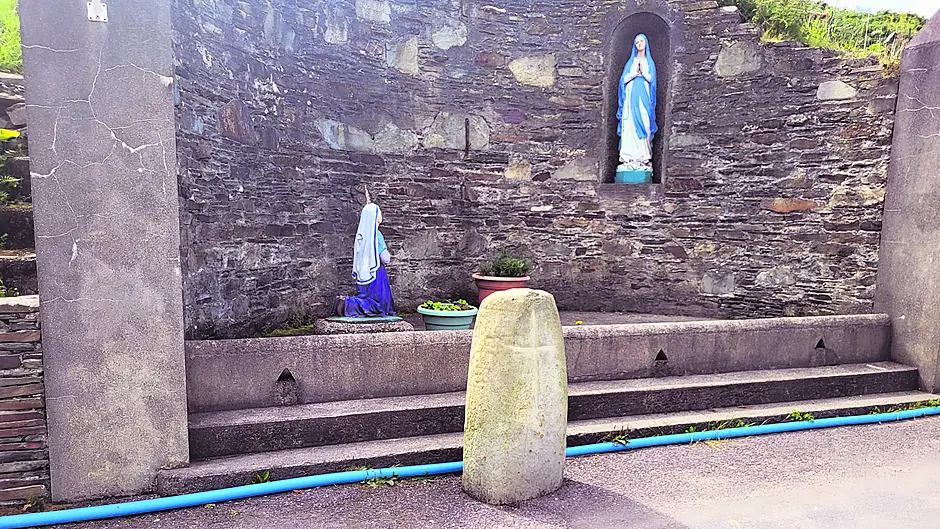ISLANDERS on Cape Clear will be seeking permission from the national monuments authority to move a centuries-old pillar back to its original position.
Séamus Ó Drisceoil confirmed that a meeting was held on the island to gauge public opinion, and the response was overwhelming in favour of moving Gallán Chiaráin, otherwise known as St Ciarán’s Pillar Stone.
Islanders not in attendance were subsequently polled and the result was ‘a universal yes’ in favour of moving the early Christian pillar stone about 20m to its original spot – a grass bank, east of the grotto, in the North Harbour.
‘The pillar stone, which is believed to be about 2,500 years old, won’t last another 2,500 years where it is,’ said Séamus, ‘so people are keen to see it moved.
‘At present, it is located in front of the grotto, on the roadway itself, so it is in a very bad spot,’ said Séamus. In recent years, the road was resurfaced around it, and it has even been damaged by vehicles.
‘Leaving a decorated pillar stone from the Early Christian Period, or the even earlier Iron Age, unprotected on a roadway is not sensible,’ he said, ‘the appropriate solution would be to return the stone to its original position.’
It’s only in its current location for a little over 100 years. The islanders want to move it to where it once stood for thousands of years.
There are a number of reasons why it was moved in the 1900s. The topography of the land was different at that time so there wasn’t any road. The beach came further in, and people used to cross the beach coming and going to the harbour. It was in a spot where people used it for tying boats and other things.
At one time, Séamus said, a bull was tied to it. ‘The bull went berserk and actually pulled the stone out of the ground,’ he said.
‘When the islanders moved it,’ he added, ‘they believed they were moving it to a safer place, so their intention in moving it was the same as ours is now.’
Present day islanders are, however, taking nothing for granted. They are aware that there are procedures to follow and applications to be made to the national monument service, before a national monument can be moved. The debate has renewed interest in the stone, which is decorated with three crosses – one on the west and one on the east side, with the third on the top of the stone.
The cross on top of the stone is in relief, while the other two are incised. Of added significance is the fact that there appears to be a panel of decoration on the upper part of its south face. Archaeologists who have examined the stone suggest that it may be a decorated pillar stone dating to the Iron Age (c500BC–c400AD) that was later ‘Christianised’.









